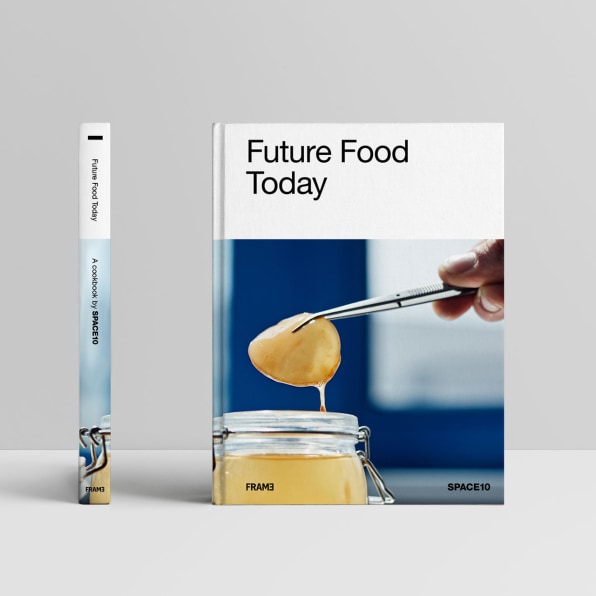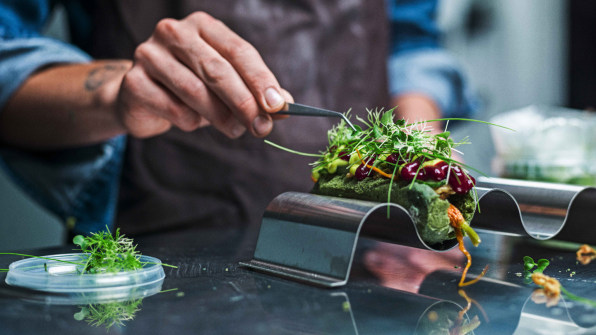
This cookbook from the future teaches you to make bug burgers and algae chips
Designed by Ikea’s innovation lab Space10, Future Food Today is chock-full of recipes that use unconventional ingredients like microalgae and mealworms.
What does the future of food look like? Since meat and dairy are the cause of 14.5% of all carbon emissions, we’re going to have to drastically change what we eat if we’re going to correct course on global warming.

Luckily, Ikea’s innovation lab Space10 is publishing a cookbook called Future Food Today to help. Packed with about two dozen recipes that rely on what the lab calls “future foods”–like microalgae and mealworms–the cookbook is designed as an educational guide to sustainable eating that is as approachable and as easy to assemble as Ikea furniture. Sample recipes include Bug Burger, Swedish Neatballs, Algae Chips, and Non-Avocado Toast.
In many ways, this is just like any other cookbook, with recipes for salads, soups, main dishes, and desserts presented alongside gorgeous photography. But the recipes often contain unusual ingredients, like mushrooms grown using coffee grounds, the blue-green edible algae spirulina, and insects. Even a fish taco recipe is nontraditional, with instructions on how to raise your own freshwater fish in an aquaponics system. Other recipes take classics normally made with meat, like the North African dish tagine or even the classic Swedish meatball that Ikea is known for, and provide a vegetarian alternative.
The book, which was designed by the Copenhagen-based studio Barkas, is also packed with instructional tips on how to grow mushrooms out of coffee grounds or construct a DIY hydropronics station with Lego to grow microgreens. Cookbook editor Polina Bachlakova believes that helping at-home chefs produce their own food, like through growing microalgae, will be crucial to shifting away from unsustainable eating habits. “It really represents that eating new sustainable foods doesn’t have to be super expensive or gross or weird,” she says. “It can fit into your lifestyle.”

The key to all of this? The food, which was tested and refined over the years by Space10 food designer and chef Simon Perez, is supposed to be just as good as something made with meat or dairy. Take the recipe Dogless Hotdog, which features a bun made from spirulina and replaces the classic dog with a dried and glazed carrot. While the recipe isn’t new, Bachlakova points to it as way that Space10 has taken a type of food millions are familiar with–the hot dog–and turned it into a sustainable dish.

Whether the food tastes as good as Bachlakova claims remains to be seen (I haven’t tried any of them myself), but people who live in Copenhagen can now get a taste at Space10’s recently opened headquarters, which includes a test kitchen and a small cafe that’s open to the public. Along with kitchen experiments, Space10 has also researched futuristic concepts and present-day trends like self-driving cars, coliving, solar microgrids, and AI.
Of course, it will take more than a few people changing their eating habits to curb the impact of climate change, and Bachlakova acknowledges that most of the change will have to be systemic, from corporations and governments. But that doesn’t mean individuals can’t be more mindful of what they eat, and how they eat it.
“The point is to inspire people and for it to be aspirational and practical so everyone feels comfortable getting their hands dirty and trying to connect their values with how they eat,” Bachlakova says. “Cutting down on meat and growing your own algae is an empowering feeling and unites people in this cause that’s so necessary for the entire world to rally around.”
1/6 Lean Green Tagine [Photo: Emil Hornstrup Jakobsen/courtesy Space10]
Comments